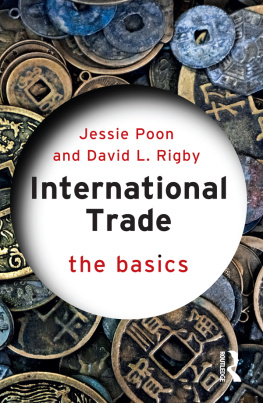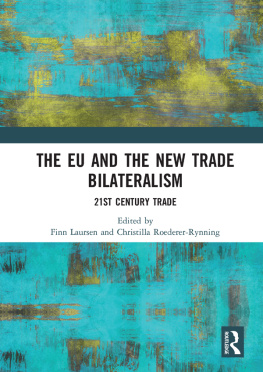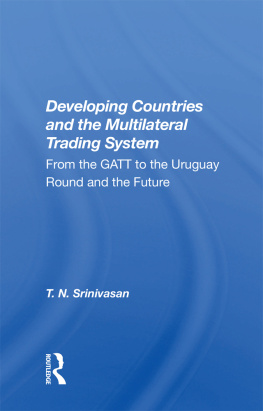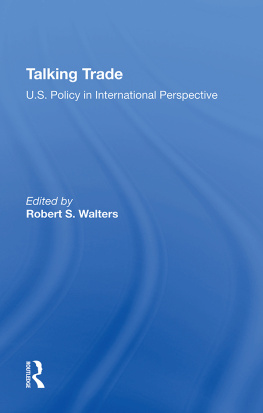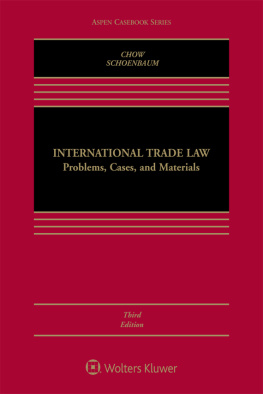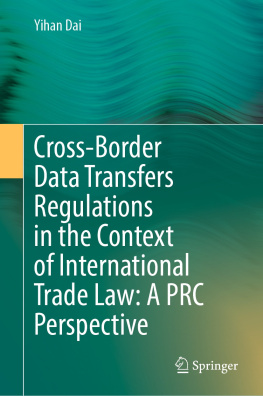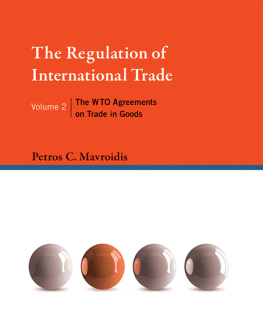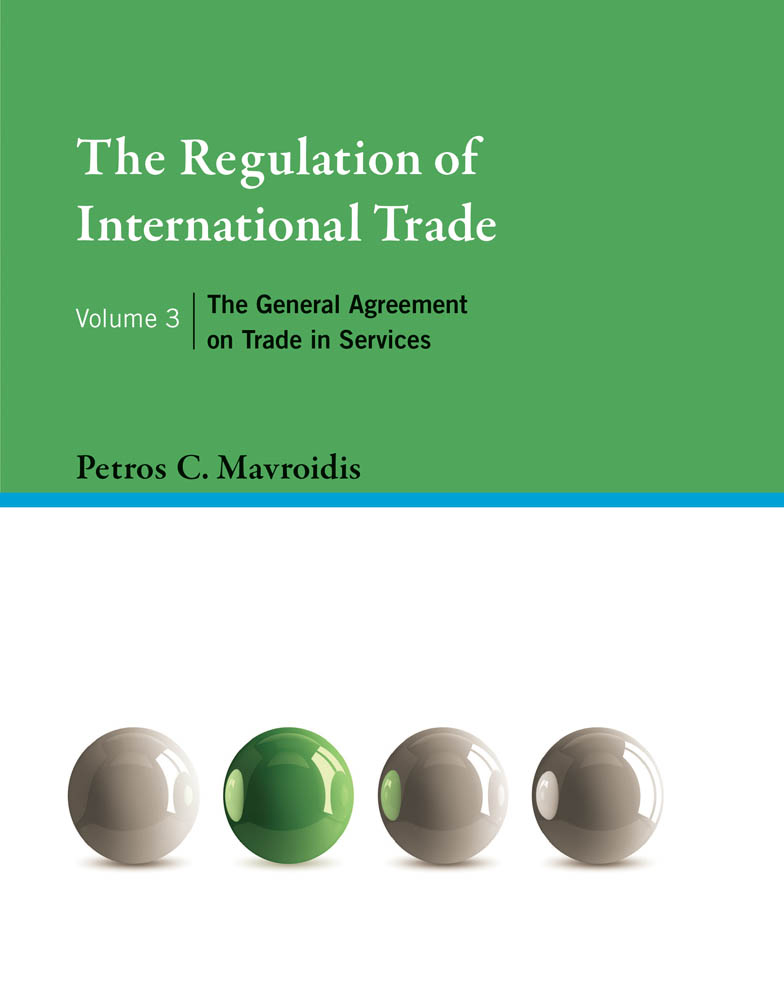Share of GDP: Exports of goods and services. Shaded areas indicate US recessions.
Share of GDP: Imports of goods and services. Shaded areas indicate US recessions.
GATS telecommunications commitments of WTO members (Annex 2.C Communications Annex)
Acknowledgments
Stephen Stigler, a famous historian/statistician, is credited with Stiglers law of eponymy: No scientific discovery is named after its original discoverer. Well, if this is true for science, it is much more so for arts, and definitely so for a book like this one, which explains the legal disciplines embedded into an international contract. This book is the product of eternal, sometimes acrimonious, but always enlightening discussions between me and many individuals, who generously shared their expertise with me.
First, and foremost, I want to thank Juan-Alberto Marchetti, my coauthor on a few papers on the GATS, who should have been my coauthor in this book as well. Juan-Alberto is, as far as I am concerned, one of the best experts on GATS, and he combines a deep institutional knowledge with an ever-inquisitive mind. He has tirelessly responded to all my GATS questions over the years, and it is largely thanks to him that I eventually managed to understand the many complicated GATS institutions. His pioneering work figures prominently in this volume. I can say, without an ounce of exaggeration, that this volume would not have seen the light of day without his input.
Carlo-Maria Cantore-Metastasio, a WTO stalwart, read the whole manuscript and gave me very detailed, precious comments for every chapter included in this volume. I learned so much from his comments, and I only hope I will one day be in a position to repay him for all his assiduous and hard work.
At the WTO, and more generally in the Geneva region, I was fortunate enough to interact with dozens of people who corrected my misunderstandings and referred me to documents that have enriched the pages of this volume with valuable information. To Marc Bacchetta, Pan Deli (aka Panyotis Delimatsis), Rodd Michael Izadnia, Andreas Maurer, Niall Meagher, Nora Neufeld, Damien J. Neven, Neeraj R.S., Pierre Latrille, Rhian Mary Wood-Richards, and Tatiana Yanguas, thank you very much.
My longtime friends and coauthors in Europe and the United States, Bernard M. Hoekman, Patrick A. Low, Doug Nelson, Damien J. Neven, and Andr Sapir, critically discussed many of the ideas expressed in this volume with me and provided me with very welcome comments.
At Columbia Law School, in New York City, I profited from the knowledge and generosity of my colleagues and friends Jack Coffee, Kabir Duggal, Philip Hamburger, Clarisa Long, and Lisa Sachs. Karolina Ekholm shared generously with me her experience in banking. Numerous discussions with Jagdish Bhagwati, Bernard Hoekman, Henrik Horn, Doug Irwin, Bob Staiger, and Alan Sykes helped me streamline my thinking on the economics of the GATS.
Mislav Mataija was my information shortcut about regulation of services in the European Union (EU) context. Our discussions helped me delve into the intricacies of the most integrated transnational market that we know of, and thus provide me with a benchmark to evaluate the various institutions of the General Agreement on Trade in Services (GATS). Americo Beviglia-Zampetti discussed part II of this volume with me and shared with me his work on rules of origin for services. World Bank officials Ileana-Crisitina Constantinescu, Michael Ferrantino, Aaditya Mattoo, and Michele Ruta shared their research on trade in services with me, as did my good friend, Brad McDonald of the International Monetary Fund (IMF). I had the immense fortune to cooperate with Susan McClung and Helen Wheeler at Westchester Publishing Services. Alas, we have only been in virtual contact for some time now, and I can only express my gratitude to them from a distance. This has been a very fortunate experience for me, and these two individuals have set the bar so high that I risk being often disappointed in the future.
To all these individuals I am indebted, and I only hope that I will eventually be in a position to reciprocate.
By now, my wife and children have gotten used to the rather unpleasant sight of a middle-aged man sitting in front of the television with a laptop on a pillow. Their occasional smiles as they pass by mean more to me than they can ever imagine.
St Luc, Valais, Switzerland
March 2020
Preface
There are numerous accounts of various features of the General Agreement on Trade in Services (GATS), but only a handful of comprehensive discussions of it, from A to Z. And even the existing comprehensive accounts do not discuss the GATS in its historical context, or against the background of the national preferences that have shaped it. This is the main focus of this volume. In the absence of a coherent economic theory explaining the GATS, recourse to the negotiating intent seems like the obvious place to start our efforts to understand its rationale and objectives. This knowledge is necessary input for not only the understanding of the disciplines imposed, but also their possible improvement.
The GATS offers an appropriate test bed to discuss the World Trade Organization (WTO) and the current doom and gloom surrounding it. There is, of course, no causal relationship between todays inability to have meaningful negotiations on trade in services and the fact that the WTO seems to be dwindling into irrelevanceor, stated more accurately, limited relevance. The negotiations on liberalization of trade in services, though, contributed to all this. After all, the Trade in Services Agreement (TiSA) concerns trade in services (as its name indicates) and dealt a serious blow to WTOs monopoly to liberalize trade on the multilateral plane. Recall that TiSA was negotiated outside the WTO. In a way, TiSAs (provisional?) freezing has been a blessing for the WTO.
A successful GATS could be a blessing for the WTO. The GATS deals exclusively with behind-the-border instruments, nontariff barriers (NTBs)precisely the instrument that the WTO has not managed to tame. The GATT has done a great job of lowering the level of tariffs (customs duties) since its inception in 1947. The WTO was supposed to pick up from where the GATT had left off and attempt to discipline NTBs. It has not delivered on this promise, or at least it has not managed to do so comprehensively.


